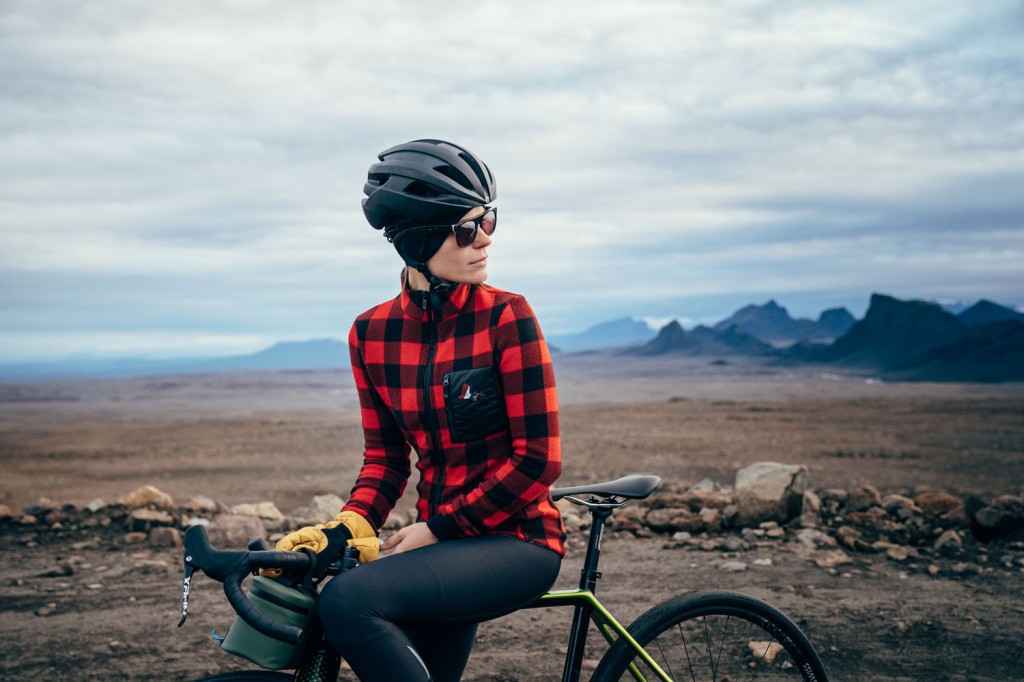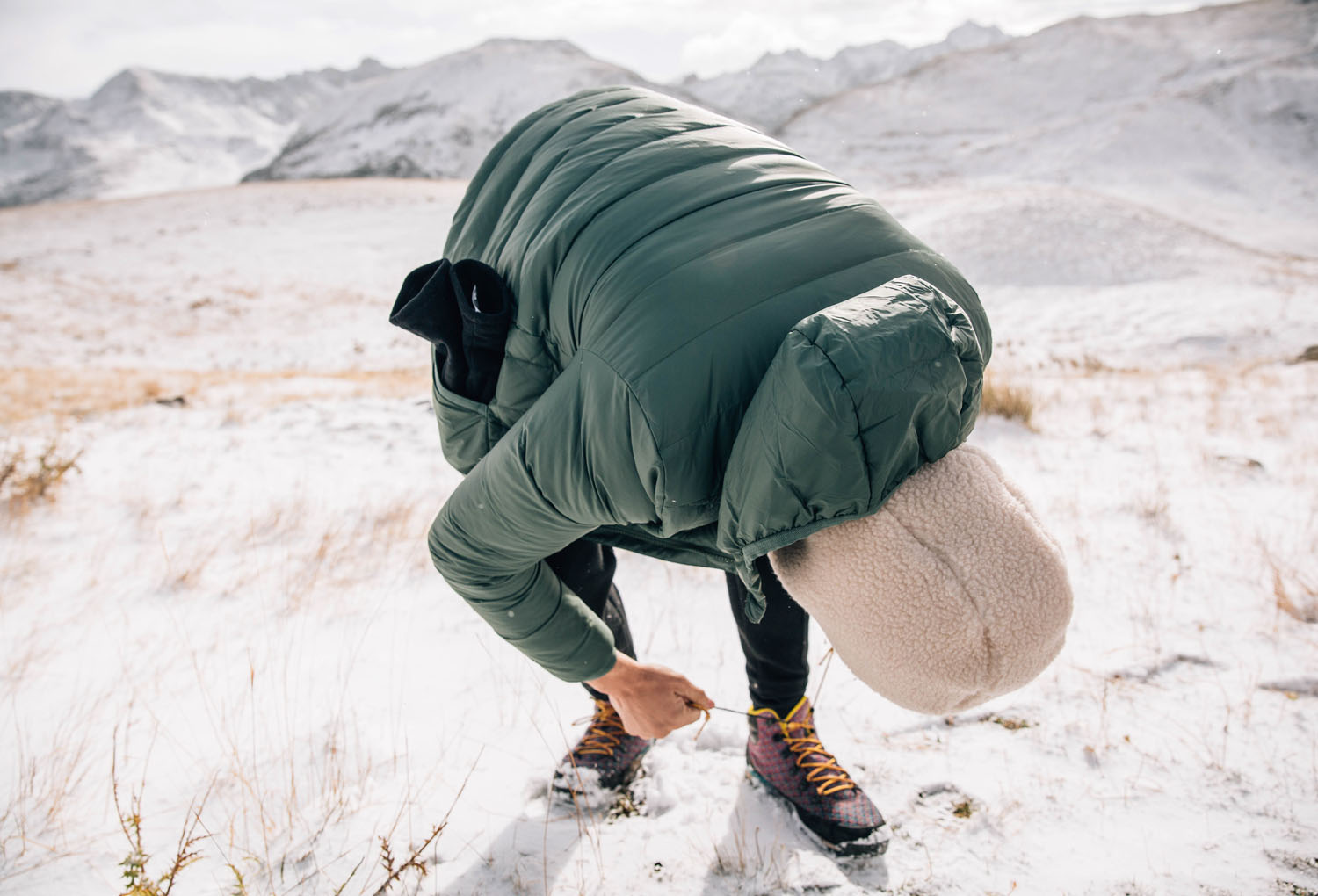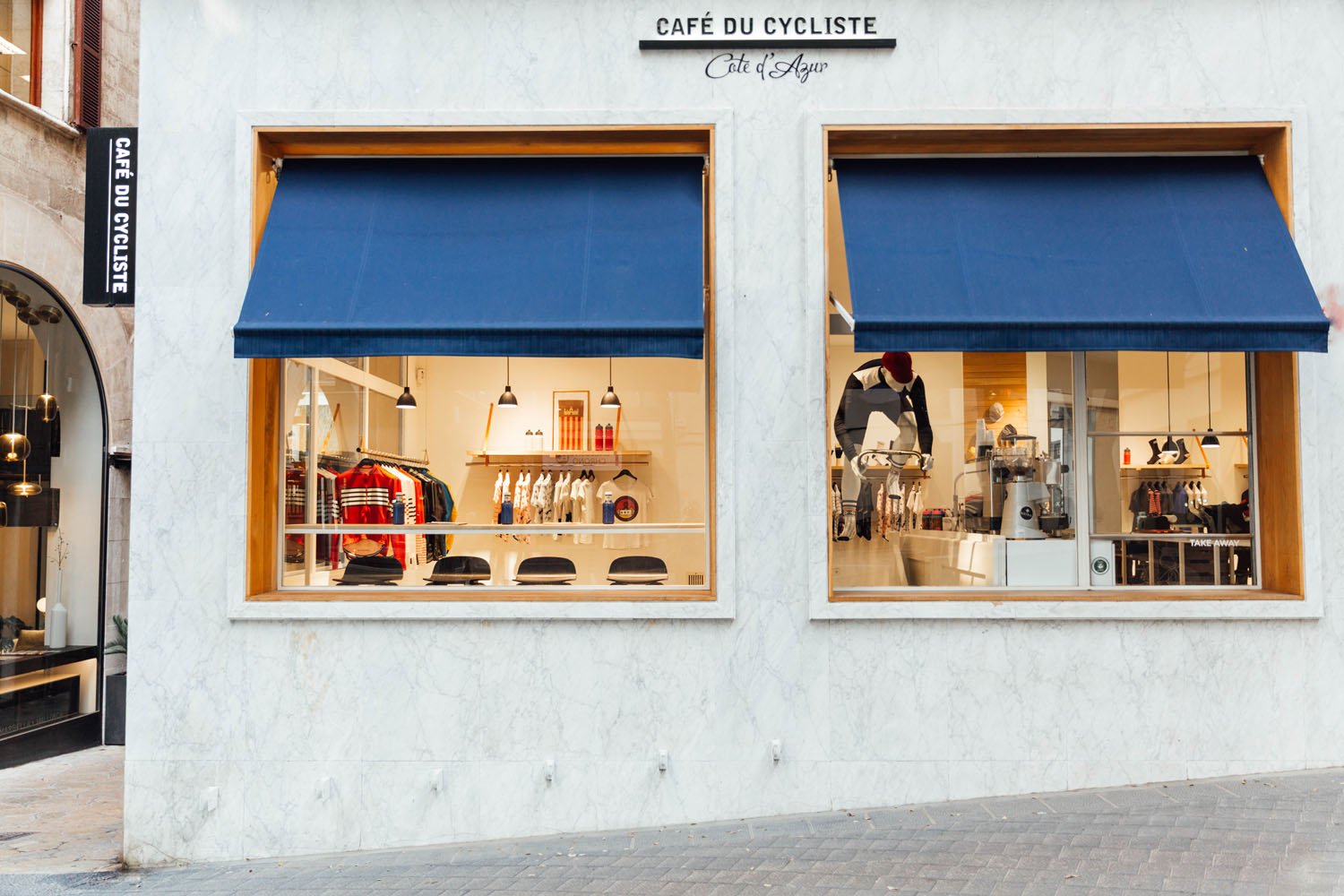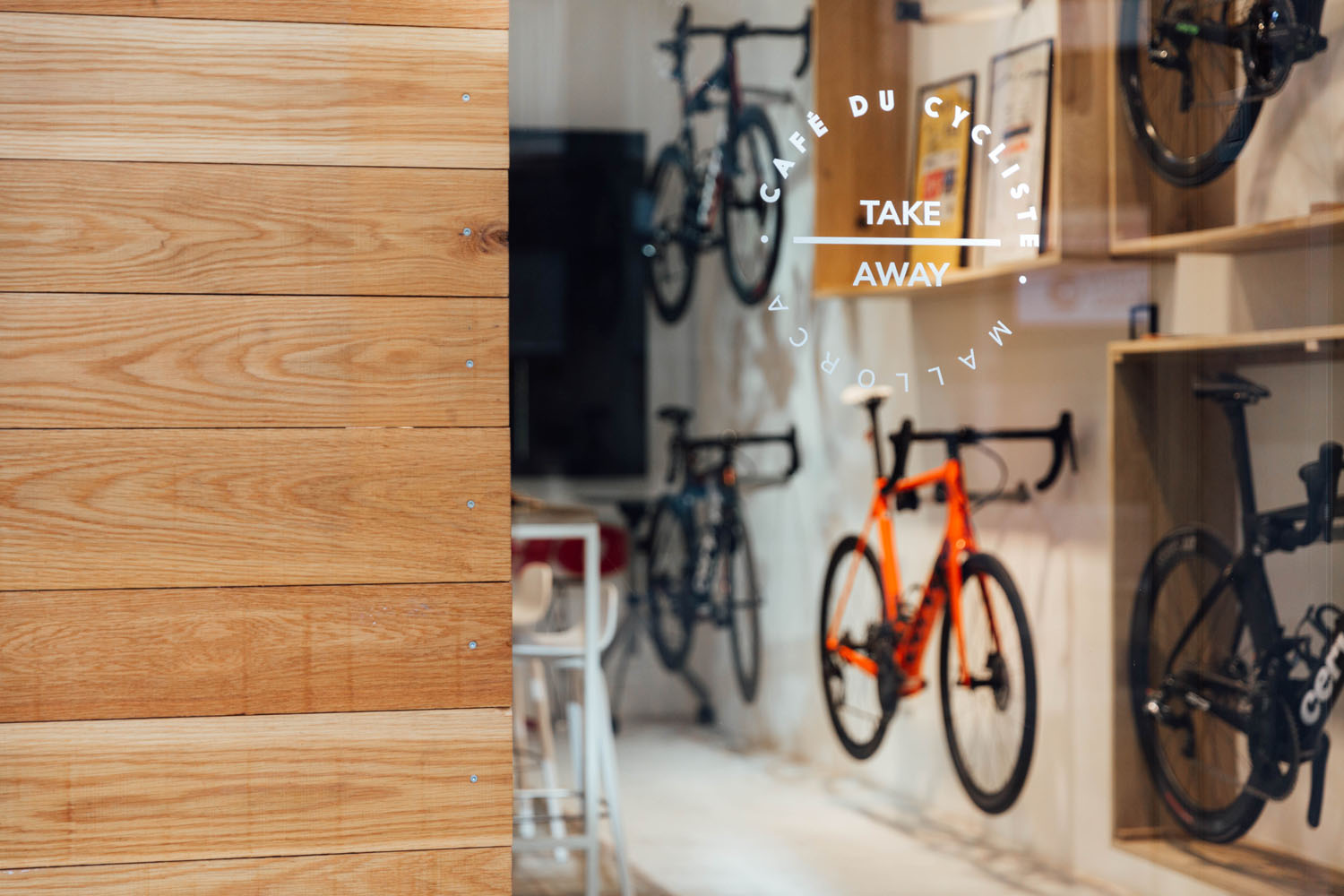“It’s Friday evening—almost the weekend.”
Calm and relaxed despite the upheaval of cardboard packing boxes in the Café du Cycliste headquarters, Rémi Clermont is looking forward to joining his friends for a gravel ride. Taking time out from organising an office move, the co-founder of the French Riviera-based cycle clothing company reflects on a decade of designing, why he’s more than happy to have a hood on his cycling jersey and how the brand’s lifestyle spirit reflects the way we ride our bikes.
cyclespeak
So how’s your day going?
Rémi
I’ve been busy sorting out our office move. Here in Nice we have the café on the port – the best place in the world – with our headquarters only 500 metres away. But this is the last month we’ll be spending in this office because we’re moving. Our team is growing and we’ve outsourced our logistics. Until very recently we were shipping everything ourselves so we were surrounded by boxes. This operation has now moved to the north of France and freed us up to find a nicer office that reflects our needs over the coming years.
cyclespeak
Not to dwell too much on the past but when your cycling friend and work colleague Andre Stewart quit his job to open a café in a small village to the west of Nice, it took another two years before you also left the company to join him.
Rémi
Andre was the boss of the IT company I was working for. Network security. But when you start working in a new job, you don’t often get to talk to the boss except if you cycle and the boss also cycles. And in this situation, the barriers between boss and stagiaire are not insurmountable [smiles].
cyclespeak
So you became friends through riding.
Rémi
That’s right. And when Andre quit, I had no real plans to leave the company. It was hard work and very fast paced but I liked the job, the salary was good and you could go to the office in flip-flops and shorts. But then my direct boss changed and everything changed with it. That was the point at which I decided to leave and the thought just came to me that I could join Andre at his Café du Cycliste and do the clothing. So no real plan—just a series of unrelated circumstances.
cyclespeak
Before launching your first range of cycle wear, I’ve read that you visited a host of trade shows and asked millions of questions. In hindsight, are there any questions you now wish you’d asked?
Rémi
I’m still learning every day but there’s nothing I discovered later that I thought, shit, if I’d only known that at the beginning. But the one thing I didn’t realise – maybe fortuitously – was the time scale of what I was getting into. I was 35 and changing careers to get closer to my childhood pastimes of kayaking and mountain biking. And when you start something new, it has its challenges and difficulties which requires time and effort. And it took at least four or five years until I understood the complexities of structuring the company and the need to hire the right people instead of me doing everything. And that’s also when I finally acknowledged that it would take the same amount of time to see the project to a point where it was commercially viable. So not knowing all this at the start was possibly a good thing or I might have decided to stay in IT [laughs].
cyclespeak
But then we wouldn’t have your Café du Cycliste designs.
Rémi
What I enjoy about cycling apparel is that whatever you like, you can probably find it. Whether that’s big flashy pineapples on your jersey or something much simpler. When we started, that wasn’t so much the case. You had the race and performance focused brands and there was Rapha with their classic, understated aesthetic.



cyclespeak
But you feel times have changed?
Rémi
The hardcore cyclist still exists who thinks a jersey should be pure racing in the spirit of past decades and anything else is a fashion brand. But the fact that we’re doing things quite differently today is not so much of an issue because a technical jersey is still technical even when it’s presented with a certain design spirit. It’s not a contradiction [smiles].
cyclespeak
So you’re not afraid to challenge design conventions?
Rémi
What I love about cycling is that everyone has their own opinion and their own reason for riding a bike. Which is as it should be.
cyclespeak
Even the hardcore cyclists [smiles]?
Rémi
In the beginning of Café du Cycliste I would send my Dad a lot of our products. And I would call my Mum at the weekend and ask if he was wearing them. And she’d tell me that he was out riding with his club mates and wearing Assos.
cyclespeak
I like that you called your Mum.
Rémi
But clearly the market in cycling has shifted over the past decade because now it’s totally the opposite and my Dad is wearing our products and all his friends are asking him for discount codes. And my Dad and his friends are nearly all in their 70s—possibly the hardest customers to convince. So when they change their minds about what it takes to look cool on a bike, then things are really moving forward.
cyclespeak
Have they changed or has your brand changed?
Rémi
They’ve changed. And the interesting question is why? You take my Dad—in the past he would only ride road but then he bought a gravel bike and now he’s also got a mountain bike. So his attitude towards cycling and his vision of what it means to ride a bike has clearly altered. And I’ve also noticed that when you’re getting to know someone they might tell you they’re a cyclist in the same breath they mention how they teach in a school or work in a factory.



cyclespeak
What was once a hobby is now a lifestyle?
Rémi
It’s the same in surfing, skateboarding. In mountaineering.
cyclespeak
If this is the case, who would you say are your customers?
Rémi
Geographically, they are truly international—we sell less than 10% of our product in France. And the American continent, the Far East and northern Europe are particularly important markets. Perhaps even more interesting is that we sell 30% to women.
cyclespeak
So how do all these different markets determine your design decisions?
Rémi
To be honest, for the first ten years I’ve been designing for myself and the essence of that approach hasn’t fundamentally changed. The brand was born with the vision I have of cycling—there’s no real secret. What I like in life and what I like in cycling—clearly you can see in Café du Cycliste. And I’m an outdoor person – I come from a background of kayaking and mountain biking – so all of these different aspects feed into what the brand represents.
cyclespeak
You mentioned expanding the team?
Rémi
Until very recently I was the only person designing the products – a very simple way of working – but we are now building a design team and a marketing team. And what’s important is that everyone understands who we are and where we’re going. It’s not rocket science—it’s the DNA of the brand. But this process is made easier because we all spend time together riding.
cyclespeak
Where do you look for inspiration before sitting down to design a collection?
Rémi
Most of the time it’s anywhere but cycling. For the technical aspects we need to understand how a product will work on the bike but there’s a million reasons that people choose to cycle and those reasons need to be translated into our clothing. So we might look at a vintage tracksuit from a certain period and then use this as inspiration for a small collection that captures the same spirit. And from the very start, we’ve used the Breton stripe in our designs. Being French, being by the sea, it works very well.








cyclespeak
This might be a difficult question to answer but do you have a favourite Café du Cycliste product?
Rémi
I think it’s the gravel hoody. For me, this is a product that says it all. People might question why the hell we put a hood on a cycling jersey—it’s going to catch the wind after all. But who’s riding so fast they need to worry about the second or two they might lose not being aero? And having the comfort of a hood – off the bike or under your helmet – represents our move to a different vision of cycling.
cyclespeak
Is it stressful or a rewarding process to continually reinvent your collection?
Rémi
Sometimes I do question whether it will be a problem one day. For the moment it’s really fun and the reality is we’re not a fashion brand with the requirement to deliver a completely new collection every spring and autumn. I see no point in reinventing everything, every year, for the sake of it. We’ve now reached a balance with a few new products and a good chunk of the collection being carried over.
cyclespeak
In 2015 you moved into a new café location in Nice. A former art gallery. How do you feel when you walk through the door?
Rémi
In many ways a brand is intangible, so having the café allows our customers to touch our concept of cycling. It’s the flesh on the bones so to speak. So I feel proud and because I still ride all the time, I enjoy experiencing the atmosphere of cyclists going out to ride and coming back happy.
cyclespeak
It sounds to me that you value this interaction?
Rémi
I live on the opposite side of the port to the café and I love to call in for a quick coffee before I go out for a ride. I might have a little conversation with a customer or bump into someone I know. The café breathes a love of cycling in a sense that’s separate and distinct from the business side of the company. Anyone who runs a business on a daily basis has a certain degree of stress but the part of my professional life that is always cool is when I spend some time in the café.
cyclespeak
Quite a few times you’ve mentioned people. Is community an important aspect of your brand?
Rémi
I suppose it’s the reason many of us cycle—not just to push the pedals. But it’s also something of a challenge because although we have our cafés in Nice and Mallorca – London is more of a retail destination – up to 85% of our sales are made online.



cyclespeak
Can I respectfully disagree? Because the way you frame your web content – the photography, the journal stories – I think it is possible to build a community remotely. Surely if any aspect of the media you create inspires an individual to go out and ride, then there’s a connection being made. This might be at a physical distance but it still suggests a relationship with your brand and what you stand for?
Rémi
All of the articles that we do, they only exist because we do them with people. So I suppose, in a sense, you are right. And I hope more people ride because they’ve been inspired by something they’ve seen or read, than to know how many watts they can push. Which can be fun in itself but, for me, is not the reason I ride [smiles].
cyclespeak
Does the reason you ride include gravel? Because you have an online guide for routes out of Nice.
Rémi
When the concept of gravel riding was first conceived, I spoke to Victoire* and they built a custom steel gravel bike for myself and my Dad. At the back of his bike the bridge between the seat stays has a dash and mine has the opposite so when you put the two bikes together they make a V for Victoire. But to be honest, this style of riding wasn’t new to me. When I was a kid I rode a mountain bike because road cycling was so uncool. And then, when I saw people riding gravel bikes, I immediately wanted to ride that way too.
*A French bespoke bicycle brand
cyclespeak
And the way people are riding is reflected in your products?
Rémi
When we started Café du Cycliste, road was so far away from mountain biking and bike packing was so far away from road. If you toured by bike you were a loser. If you were a mountain biker you were the enemy. But now? Everything is coming together and we see a lot of people using our gravel collection on the road. Why not? It’s only in your head that you have to wear a certain type of jersey to climb Col d’Eze. So for us, we love riding gravel but we also love the free spirit it brings to how we choose to cycle.
cyclespeak
When you aren’t riding, is there a typical work day for Rémi Clermont?
Rémi
I still touch base with a lot of elements in the company so every day is different. And very busy [laughs]. I do focus a lot on product design and development—probably 50% of my time. Then there’s the brand and what we do and who we are. And of course we mustn’t forget the office move [laughs]. But ultimately, there’s nothing that makes me happier than finalising a new product. From a cool design on paper to constructing a prototype—and to loving the prototype so much that you want to keep wearing it. That’s what makes my day.
cyclespeak
Speaking of these processes that you love, what most excites you about the future of Café du Cycliste?
Rémi
A slight movement away from being purely a cycling clothing provider. That’s what’s exciting—a shift towards more of a lifestyle spirit. I believe that it’s better for everyone – for our health and wellbeing – to view cycling as more than just a sport. And hopefully better for us as a brand [smiles].



cyclespeak
For me, a good day is when I can ride. And performance is great but there’s so many other facets of riding a bike.
Rémi
I know road cyclists that look in envy at the person taking their kids to school by cargo bike. And it’s good to see more bike shops and cycle cafés opening up—even though from a business perspective it would make sense if we were the only one [laughs].
cyclespeak
There’s now more competition?
Rémi
At the beginning I thought, shit, there’s another and another. But at the end of the day, if people are getting out on their bikes rather than driving their cars, then we all get to benefit.
cyclespeak
Talking about getting out on a bike, when is your next ride?
Rémi
I’m actually going gravel riding tomorrow morning but I’ve absolutely no idea what my friend Stefan has planned for me. He regularly models for us – the guy with the big moustache – and all I’ve been told is we’re meeting at 9:00am at his house. But I do know it will be fun [laughs].
All images with kind permission of Café du Cycliste
